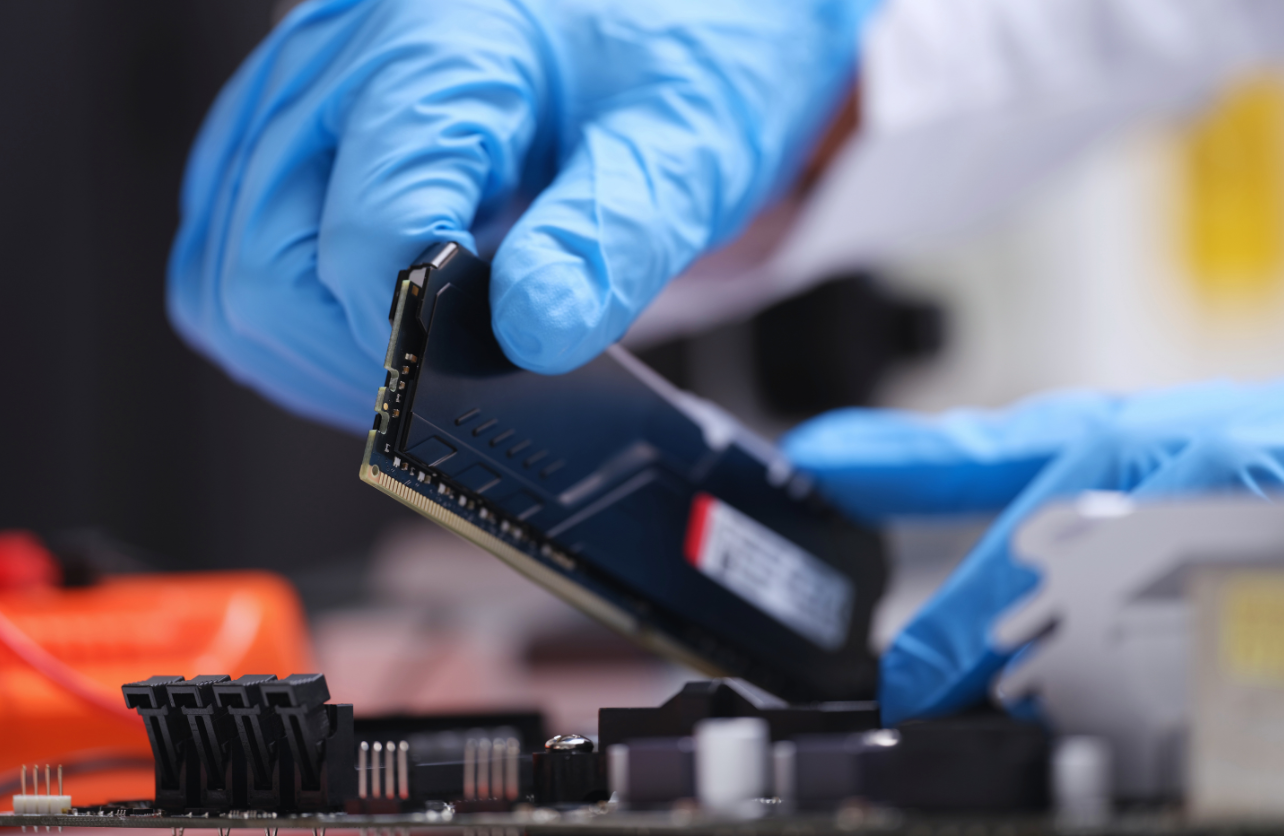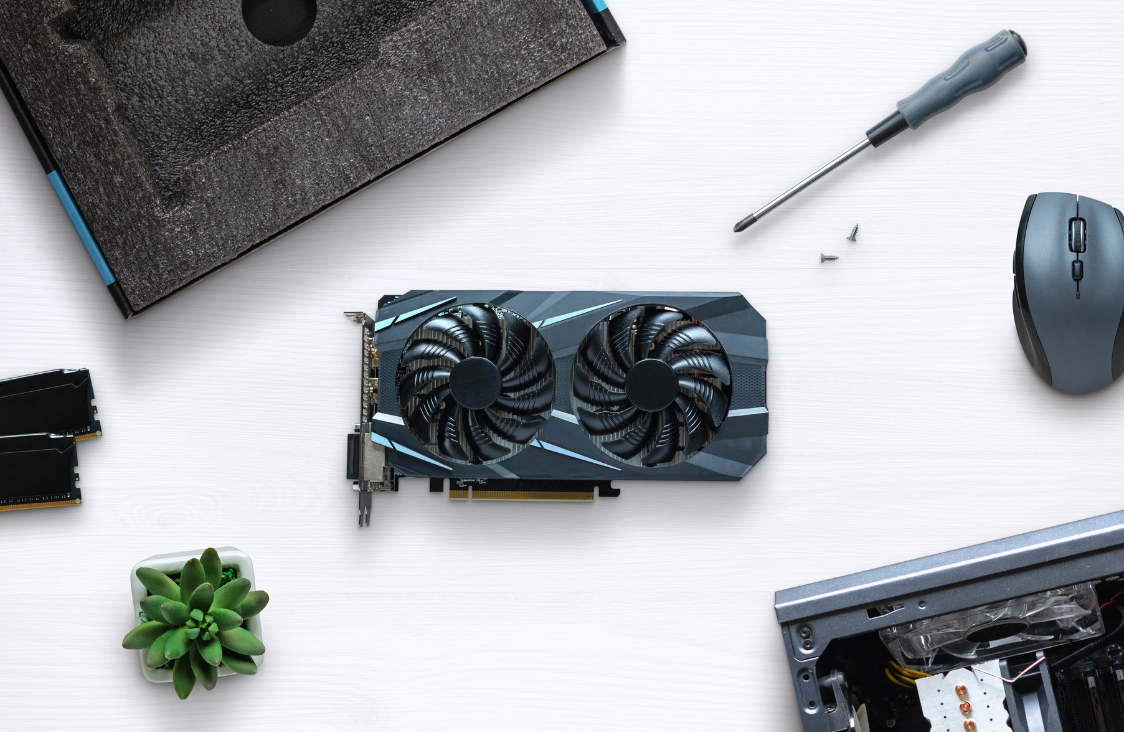Gaming PCs 101: What Does RAM Do for Gaming?

RAM plays a significant part in how your system handles gaming, impacting everything from load times to gameplay smoothness. Keep scolling to learn how RAM can affect your gaming experience and the overall usability of your PC.
What Is RAM?
RAM, or Random Access Memory, is your computer’s short-term memory. It temporarily stores the data your CPU needs to access quickly. Unlike your storage drives, which hold data permanently, RAM only retains information while your system is powered on. When gaming, RAM allows your PC to handle the constant flow of data required to render graphics, process physics, and manage game assets. The more RAM you have, the more efficiently your system can perform these tasks, leading to smoother gameplay.
How Does RAM Impact Gaming?
Faster Load Times
One of the most noticeable benefits of having adequate RAM is faster load times. Games load assets like textures, models, and sounds into RAM to be accessed quickly by the CPU. With enough RAM, these assets can be stored and retrieved efficiently, reducing load times and minimizing stuttering during gameplay.
Smoother Gameplay
RAM also plays a crucial role in maintaining smooth gameplay. Games require real-time processing of data, including rendering graphics, calculating physics, and managing AI. If your system doesn’t have enough RAM, it may struggle to keep up, leading to frame drops and lag. Having sufficient RAM ensures that your game runs smoothly, even during the most intense sequences.
Multitasking
Gamers often run multiple applications alongside their games, such as streaming software, voice chat programs, or web browsers. Having enough RAM allows your system to handle these additional tasks without compromising gaming performance. With inadequate RAM, your system might slow down or crash when switching between tasks.
How Much RAM Do You Need for Gaming?
The amount of RAM you need depends on your gaming requirements and the type of games you play. Here’s a general guide:
- 8GB of RAM: The minimum for modern gaming, suitable for less demanding games and basic multitasking. However, this may be insufficient for newer AAA titles or when running multiple applications simultaneously.
- 16GB of RAM: The sweet spot for most gamers. It’s enough for modern games at high settings and allows for decent enough multitasking. This is the amount I currently have in my PC. From experience, you can have a couple of applications open in tandem with your video game but probably won’t be able to get away with having lots of Google Chrome tabs open (54 at the time of writing) and play any modern titles without some performance loss.

Typical Chrome behavior - 32GB of RAM: Ideal for gamers who want to future-proof their systems or engage in streaming, content creation, or running virtual machines. While 32GB may be more than what’s necessary for most games today, it ensures your system can handle anything with ease.
- 64GB of RAM: This amount is generally overkill for gaming alone but is beneficial for professionals who use their PC for high-end content creation, 3D rendering, or running multiple virtual machines simultaneously. Gamers who also work with large datasets or edit high-resolution video might find 64GB of RAM advantageous.
The Difference Between RAM and GPU VRAM

While RAM handles general system tasks, GPU VRAM (Video RAM) is dedicated to handling graphics-related processes. VRAM is a specific type of memory found on your graphics card, and it’s responsible for storing the textures, shaders, and other visual data needed for rendering images and videos. Here’s how they differ:
RAM (System Memory)
- General Purpose: RAM is used by the CPU to manage a wide range of tasks, not limited to gaming. It handles everything from running your operating system to managing background processes and applications.
- Impact on Multitasking: More RAM allows for better multitasking and ensures your system doesn’t slow down when running multiple programs.
- Speed: The speed of your RAM (measured in MHz) can influence how quickly data is accessed, impacting overall system performance.
GPU VRAM (Graphics Memory)
- Graphics-Specific: VRAM is used exclusively by the GPU to store and manage graphical data. It’s crucial for handling high-resolution textures, 3D models, and real-time rendering in games.
- Resolution and Texture Quality: The more VRAM your GPU has, the better it can handle higher resolutions and detailed textures without compromising performance.
- Dedicated Memory: Unlike RAM, which is shared by the entire system, VRAM is solely dedicated to graphics tasks, making it more efficient for rendering.
DDR4 vs. DDR5 for Gaming
When building or upgrading a gaming PC, you may encounter the choice between DDR4 and DDR5 RAM. Both have their advantages, but understanding the differences can help you make an informed decision based on your gaming needs.
DDR4 RAM
- Maturity and Availability: DDR4 has been around for several years and is widely supported by most motherboards. It’s reliable, and the technology has been optimized over time. It’s also more affordable than DDR5, making it a great option for budget-conscious gamers.
- Performance: DDR4 RAM can handle most modern games without any hassle, especially when paired with a strong CPU and GPU. Speeds typically range from 2133 MHz to 3600 MHz, with higher-end modules offering even faster speeds.
- Latency: DDR4 tends to have lower latency compared to DDR5, which can result in slightly faster response times in certain gaming scenarios.
DDR5 RAM
- Next-Generation Speed: DDR5 RAM offers higher speeds right out of the gate, with base speeds starting around 4800 MHz and going up from there. This makes DDR5 a good choice for future-proofing your system and for applications that can take advantage of the increased bandwidth.
- Improved Efficiency: DDR5 RAM is designed to be more power-efficient, which can lead to slightly lower power consumption during intensive gaming sessions.
- Higher Capacity: DDR5 supports higher memory capacities per module, which can be beneficial for tasks that require massive amounts of memory, though this is more relevant for professional applications than gaming.
Which Should You Choose?
- Current Gaming Needs: If your primary focus is gaming and you’re using a mid-range or high-end GPU, DDR4 will serve you well, offering excellent performance without breaking the bank. DDR4 is especially suitable if you’re building a system on a budget or upgrading an existing one.
- Future-Proofing: If you’re looking to build a top-of-the-line system that will remain cutting-edge for years to come, DDR5 is the way to go. It offers superior speeds and efficiency, and as more games and applications are optimized for DDR5, you’ll likely see more benefits over time.
Final Thoughts
RAM is a vital component of any gaming PC, contributing to faster load times, smoother gameplay, and better multitasking. While 8GB of RAM is the minimum for modern gaming, 16GB is the recommended standard for most gamers, offering a balance of performance and future-proofing. For those who demand the best, 32GB or even 64GB of RAM ensures your system is ready for any challenge, especially if you’re involved in high-end tasks like content creation or 3D rendering.
Your Trust, Our Core Commitment
At Rising Tech, earning and maintaining your trust is the cornerstone of our mission. We're dedicated to transparency, impartiality, and the relentless pursuit of truth in every article, review, and recommendation we publish. Our commitment to these principles ensures that you, our valued reader, are always equipped with reliable and unbiased information. Let us be your trusted guide in the ever-evolving world of technology.
